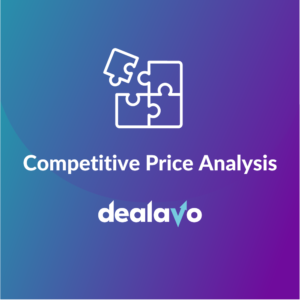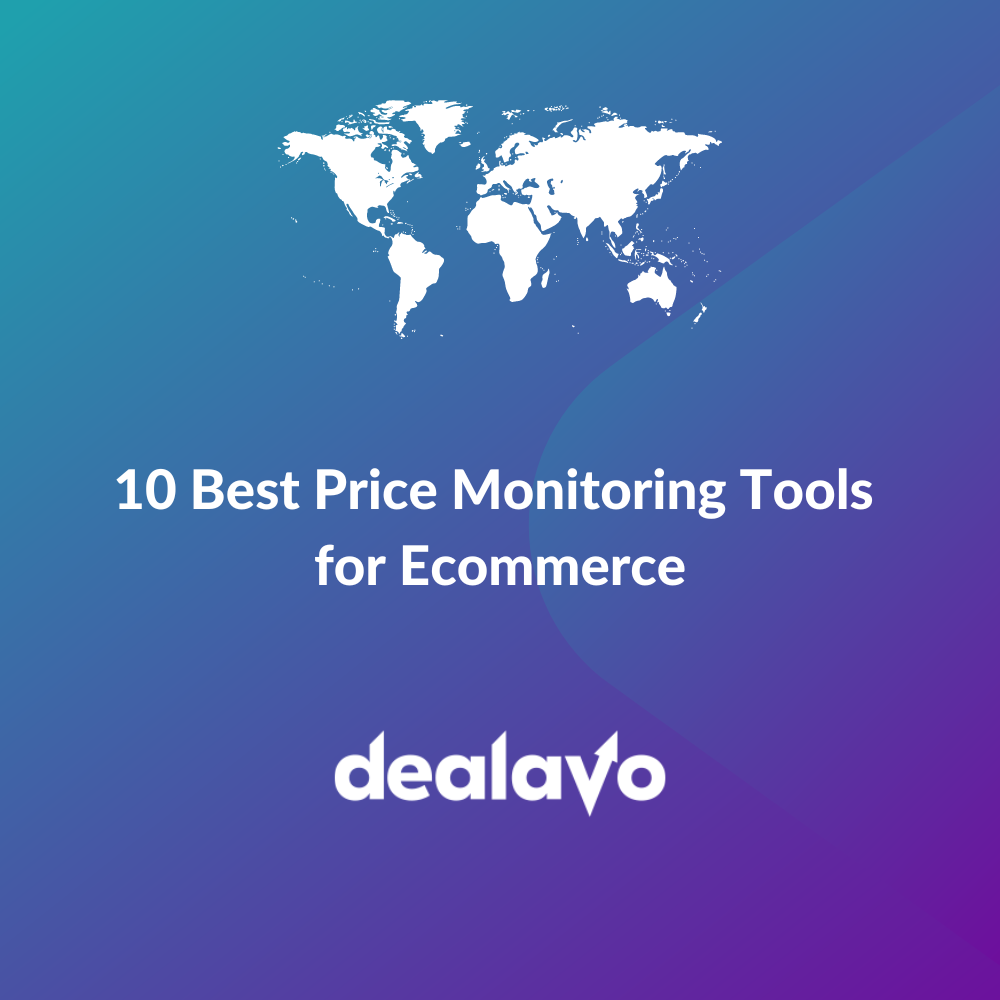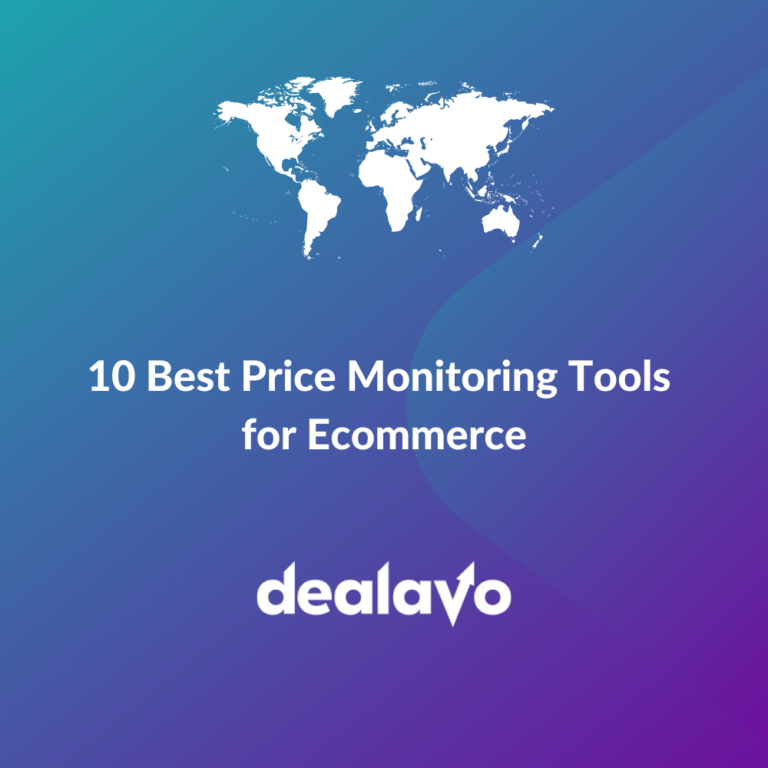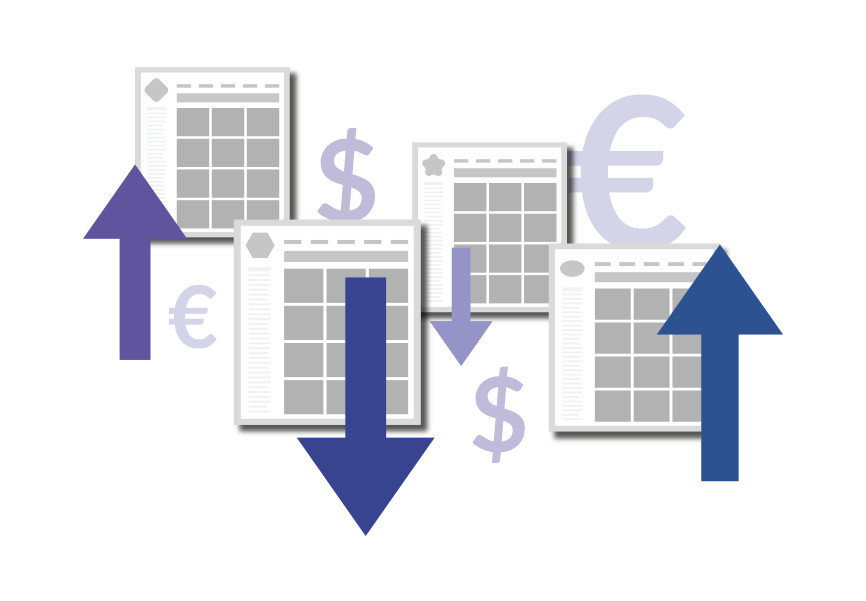
Competitive Price Analysis (E-commerce World Guide)
- 17 June 2024
Competitor analysis is a key process in e-commerce, allowing you to better understand how you are positioned in the market in terms of pricing and to assess the strength and influence of other players in the market. Such an exercise enables you to identify your pricing strategy and potential areas where you can improve your pricing position.
Analysing your competitors provides valuable insights into your pricing strategy, enabling you to make more informed pricing policy decisions.
The competitor report provides a better understanding of the market and competitors, which enables you to improve your pricing strategy. Data, especially on competitors, is crucial for conducting a fair and legitimate business, avoiding legal consequences and maintaining customer trust.
Competition under the magnifying glass
The first step in analysing competitors is to take an in-depth look at how they price their products in the market. Do they focus on offering premium products or do they emphasise a price segment accessible to everyone? This is a key question that allows us to better understand our positioning against other online shops.
Another important step is to assess the market share of competitors, which allows us to assess their strength and impact on the market in terms of pricing. This data is the foundation for strategic decision-making, enabling us to effectively allocate resources, identify growth opportunities and develop strategies to increase market share.
If you want to understand this process in even more detail, take a peek HERE.
What is important in the market share analysis process is to clearly define the segment you want to analyse. This can be based on criteria such as geographical location, product category, customer demographics or other relevant factors. It is then necessary to identify the main competitors operating in the chosen segment. These could be, for example, direct competitors offering similar products or services.
If you would like to further explore the topic of how your competitors can track and collect price data, take a look at THIS article.
The next step is to collect data on total sales or revenue. Such information can usually be found in financial statements or sales reports.
To calculate your company’s market share, use the following formula:
This formula produces a percentage that represents a company’s market share in a specific segment.
In the process of interpreting the results, consider the following questions:
- Is market share increasing or decreasing over time?
- How do market share ratios compare to competitors?
- Are there significant changes or trends in the market share data?
- What factors might influence market share dynamics, such as pricing, product quality or marketing activities?
Regular market share analysis is an ongoing and iterative process to keep the data up to date and meaningful. For an even deeper dive into this, take a look at THIS article.
Let’s talk about prices
Competitive pricing is a method of product pricing that is based on the prices offered by competitors. In practice, it involves identifying optimal price points in relation to other products available on the market. This allows companies to adapt their prices to market trends and set the price level for customers lower or higher than that of competitors, depending on the strategy adopted. In this way, the brand can build its economic or premium image, while the retailer can optimise its offer in relation to its peers. The competitive pricing method is particularly useful when similar products are already available in the market and it is easy to compare offers.
Paradoxically, the more recognisable and strong the brand, the more competitive it becomes. Let’s look at some examples of competitive pricing. An important element to consider is the uniqueness of the product, i.e. the features that set it apart from the competition, such as in the case of Apple. It is worth using unique features to justify a value-based price and differentiate yourself from competitors. Also, tracking the buyer profile to understand their needs and preferences, such as demographics, age or income, and tailoring the offer to their expectations is important. It is also worth considering psychological aspects of pricing, such as the ‘left-figure effect’, which can influence the perception of product value.
Dynamic pricing
Dynamic price adjustment is a key tool in managing product prices in the e-commerce sector, especially in the face of rapidly changing market conditions. Effective tools such as those offered by Dealavo have advanced features that allow businesses to respond to changes, providing precise price tracking and real-time adjustments to pricing policies.
With Dealavo’s software, you can effortlessly analyse data and configure automated rules to adjust prices in real time. This approach provides a competitive advantage and maximises profits, all supported by precisely validated machine learning algorithms for accurate results.
The software offers a range of pricing rules, enabling flexible price management, such as setting prices between two selected competitors, specifying a margin in percentage or amount, generating prices relative to competitors or adjusting by a certain amount or percentage based on competitors’ position in the market. Most importantly, well-tailored rules and their automation eliminate work such as the laborious analysis of competitors in terms of pricing policy, as Dealavo will take care to keep its finger on the pulse, allowing you to raise margins where possible and lower them where necessary to stay ahead of search engine rankings. With thousands or even tens of thousands of products, it is virtually impossible to manually monitor prices and react quickly to price changes in other online shops.
Competitor price analysis makes it possible:
By monitoring competitors‘ products, Dealavo is able to detect shortages in other companies’ warehouses. When competitors do not offer a particular product, the shop that has it becomes the only supplier and can increase its margin.
Using price psychology, i.e. pricing strategies based on psychological mechanisms that influence customers’ perceptions of the value of products and their relationship to the final price.
By considering shipping costs only when they are relevant to the customer.
Differentiating prices according to sales channels, allowing for different prices depending on where the purchase is made.
You can also find a few words about pricing strategies HERE.
Analysis techniques
Competitive pricing analysis requires the use of a variety of techniques to obtain valuable insights into the pricing strategy of competitors. Here are three key analysis techniques:
- Price indexing: This technique involves comparing relative price levels to a selected base competitor. This allows you to assess the price competitiveness of your own products and identify areas where you can improve your price position.
- Mapping price positioning: This technique involves visualising the positioning of competitors on a price map, taking into account both the prices and value propositions offered by each player in the market. This allows you to quickly identify gaps in your price offering and potential areas where you can offer additional value.
- Historical price trend analysis: This technique involves examining how competitors have changed their prices over time. Analysing historical price trends allows you to understand the dynamics of price changes in your industry, which can be crucial when deciding on your pricing strategy.
The use of these analysis techniques allows for a better understanding of the market and the competition, which enables you to make more informed decisions on your own company’s pricing strategy.
Legal and Ethical Aspects
In the context of pricing strategy, there are important legal and ethical aspects that must be consciously observed.
- Price fixing and collusive pricing: Price fixing is a practice in which two or more competitors agree to fix prices at a certain level. This practice is unethical and illegal as it restricts competition by forcing customers to pay higher prices. More information on price discrimination can be found here.
- Providing inaccurate prices: The unfair practice of announcing product prices that are misleading to consumers. This unethical and illegal practice can lead to a loss of customer trust and legal consequences for companies.
- Predatory pricing: the practice of setting prices so low that other companies cannot compete. This is unethical and usually illegal as it aims to eliminate competition and create a monopolistic situation.
- Monopolistic behaviour: This involves raising the price of products or services in a way that is unfair or uncompetitive. In the absence of alternatives, a company may try to impose higher prices on customers. This practice can lead to unjustified exploitation of consumers and is often regulated by law.
Understanding these issues is key to conducting a fair and legitimate business. Attention to ethics and compliance with the law are essential to maintain customer trust and avoid legal consequences.
Constant monitoring and improvement
Competitive price analysis in e-commerce involves tracking how product prices rank in a given market or how a given auction stands in relation to its competitors. The essence of this approach is to constantly monitor and adapt to changes in the market environment. Two key elements of this process are the regular updating of data so that the analysis remains as fresh as possible, and the implementation of a feedback system to act on the insights and monitor the results of the changes made based on the analysis. With this approach, companies can optimise their pricing strategy and improve their position in the market. It is worth having proven tools for this.
By fully integrating with Dealavo, it is possible to price even more effectively and to analyse the activities of our competitors, thereby maintaining our advantage and market leadership.
John Hughes, CEO of ContractorNerd, highlights the significance of ongoing competitive price analysis. “At ContractorNerd, we’ve seen how critical it is to stay informed about competitor pricing. Regular price analysis allows businesses to adjust their strategies proactively, ensuring they remain competitive without compromising profitability. It’s not just about matching prices; it’s about understanding the value you provide and positioning your offering accordingly,” says Hughes.





